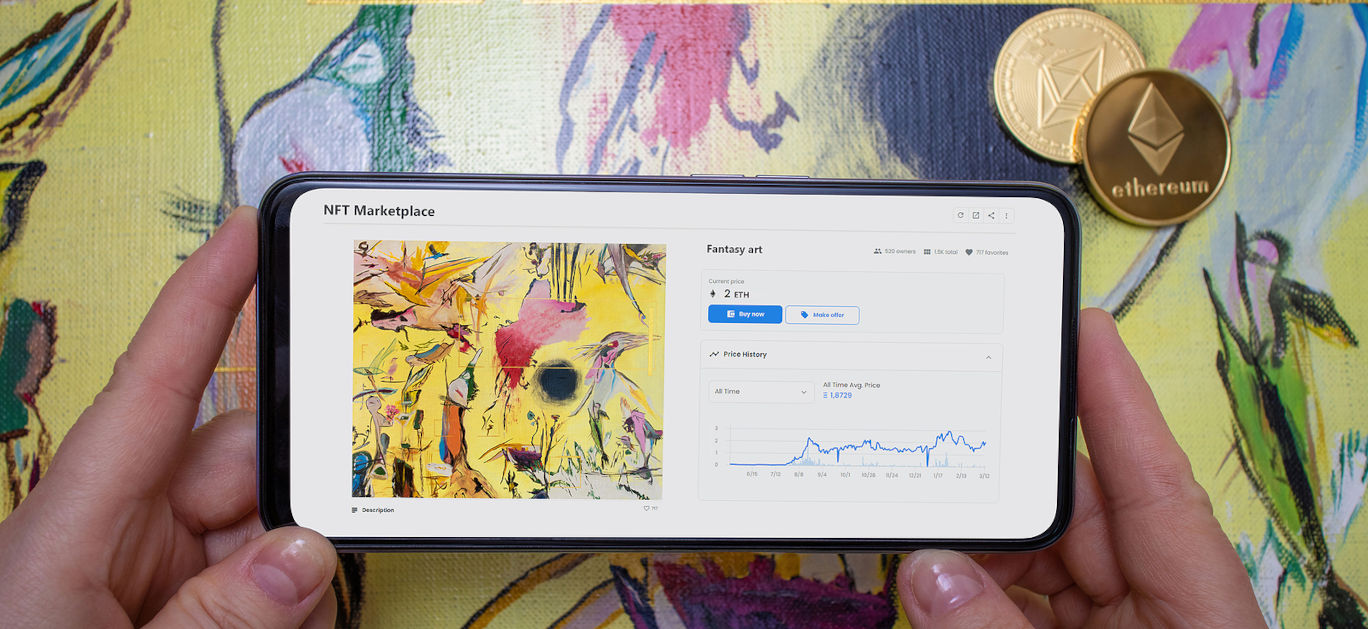The metaverse has been a hot topic over the past year, with excitement around the prospect of this virtual universe sweeping the globe and piquing the interest of investors keen to get a slice of the pie. From virtual real estate to real-time business meetings, where attendees can sit side by side around the meeting table from anywhere in the world, the metaverse could be set to transform just about every element of modern life, so it’s easy to see why it has caused quite such a stir.
And when it comes to investments, the asset type that has been on everyone’s lips in 2022 is undoubtedly the non-fungible token, or ‘NFT’ – a one-of-a-kind digital artwork with a unique digital identifier that can’t be replicated. Trading platforms like The News Spy have reported a dramatic uptick in the number of users seeking out NFTs in 2022, and it’s easy to see why.
Recorded on a blockchain – the technology that underpins popular cryptocurrencies like Bitcoin and Ethereum – each NFT comes complete with blockchain-certified authenticity and ownership. And while the asset type was at first embraced mainly by modern digital artists looking to cash in on this latest innovation, they have since been wholeheartedly embraced by the high-end fashion world, with brands like Gucci creating unique NFTs of one-off designs, spanning shoes, handbags and other accessories.
The luxury world, of course, has been one of the fastest to embrace both the metaverse and NFTs overall, moving quickly to keep up with the ever-broadening demands of an affluent, discerning customer base. But after all of the excitement that has been surrounding the digital world this year, could we be about to plunge into an unexpected metaverse and crypto winter?

Over the past twelve months, we’ve seen technologists scrambling to get in on the building of the metaverse and brands clamouring to promote themselves within it – but the momentum has begun to gradually slow as it has become clear that the development is going to take quite some time. In fact, it’s estimated that efforts to bring the metaverse to fruition could drag on for up to ten years, with proponent Meta thought to have lost billions of pounds via its Reality Labs division as interest slows and the excitement finally begins to die down.
NFTs, meanwhile, don’t seem to be faring much better, and some experts are already beginning to dismiss them as little more than a passing fad – although when you consider the fact that the same was once said about cryptocurrencies, the accuracy of this remains to be seen. Nevertheless, it seems that the drawn-out pace of the metaverse development has had a knock-on effect on the popularity of NFTs, with trading volume plunging a whopping 97 per cent in the first three quarters of this year.
With this in mind, the prospect of a metaverse and NFT winter as we head into 2023 looms large, particularly as economic slowdown continues to influence investment. It’s looking likely that the market will continue to cool for at least the next year, but the good news is that according to experts, this will only be a temporary lull. And, as the metaverse moves closer and closer to fruition, that initial excitement will almost certainly begin to build once again.

In the meantime, we can expect technology experts to continue bidding to get in on the action and play a role in creating the infrastructure that will underpin this futuristic virtual world, and the project will continue to make progress behind the scenes.
But what can we expect from the brands that have been so quick to embrace these modern innovations in the interim? Well, for starters, it seems likely that luxury fashion brands like Gucci and Philipp Plein, who have been some of the fastest to embrace both, could start to lose interest – for now. While being early adopters of the metaverse and NFTs has undeniably won them favour with their affluent customer bases, the novelty is quickly beginning to wear off – and shoppers will be looking for something else to keep them engaged until the metaverse is complete and related offerings can be given context.
It’s not over for each of these high-tech innovations, but in 2023, we can expect to see the majority of interested parties hitting the pause button while they turn their attention to other things. But this is only temporary, and beyond 2023, we could be set to enter a whole new world and the complete transformation of modern life as we know it.






















